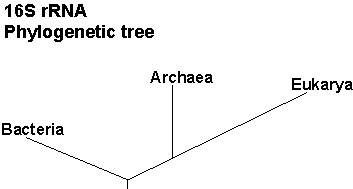|
Current Level |
|||||||||||||
|
|
|||||||||||||
|
Previous Level |
|||||||||||||
|
|
|||||||||||||
|
What is microbiology? Microbiology is the study of living organisms too small to be seen with the naked eye - a diverse group of microscopic organisms ranging from viruses and bacteria to protozoa and fungi. Microbes can be useful, such as those that decompose dead plant and animal matter or those that can be harnessed to produce antibiotics or foods like cheese, bread and yogurt. Microbes can also be harmful, such as those that cause disease, spoilage, or contaminate water supplies. Microbes can live in almost any environment, from Antarctica to the very hot, very acidic springs of Yellowstone. Some microbes are key to the cycling of crucial nutrients like carbon and nitrogen in their environment. The study of microbiology is important to a number of fields including medicine, food science, agriculture and biotechnology. General microbiology is a broad field which looks at the basics of microbial structure, physiology, growth and diversity. Microbes come in a range of shapes and sizes as can seen by checking out some of the image links below. Links to some exercises including nucleic acid problem sets. Also included are links to a number of introductory microbiology lecture courses and other cool sites. http://commtechlab.msu.edu/sites/dlc-me/
Lecture notes: Introductory Microbiology courses http://www.bact.wisc.edu/Bact303/Bact303mainpage http://www.bklyndev.liunet.edu/FacultyProjects/WebClass/micro-web/html-files/TOC.html Exercises/Software http://www.beloit.edu/~biology/HHMISumwork98/lessonplans.html Lesson plans for a number of different exercises, developed at the Summer Institute for Teachers at Beloit College, Wisconsin. Microbial Diversity Phylogeny is the study of evolutionary relationships. Unlike plants and animals, most microbes don't have many distinguishing phenotypic characteristics so their phylogeny is typically based on sequence information of a conserved molecule. One of the most commonly used molecules is the small subunit ribosomal RNA - 16S rRNA for the prokaryotes and 18S rRNA for the eukaryotes. Below is a phylogenetic tree showing the hypothesized evolutionary relationship for the 3 domains: the Eukarya, and the two prokaryotic domains, the Archaea and Bacteria. Clicking on any of the domains on the tree will take you to phylogenetic subtrees showing the kingdoms and divisions found in each of these domains. Some of the groups are linked to images allowing you to see what these organisms look like.
http://www.sciencenet.com.au/ http://megasun.bch.umontreal.ca/protists/protists.html http://www.cellsalive.com/ecoli.htm http://www.cellsalive.com/howbig.htm http://www.cellsalive.com/animabug.htm http://www-cyanosite.bio.purdue.edu/images/images.html http://www.tulane.edu/~dmsander/WWW/Video/Video.html Microbiology Video Library. http://www.asmusa.org Note: You may wish to start with the "Site Map" as the site is so large that navigational tools are a must. http://www.medschool.lsumc.edu/Micr/mirror/public_html/index.html The agarplate.com. This site contains a number of links to sites pertaining to many aspects of microbiology. http://science.ntu.ac.uk/life/staff/sjf/home/
|
|
|
|
